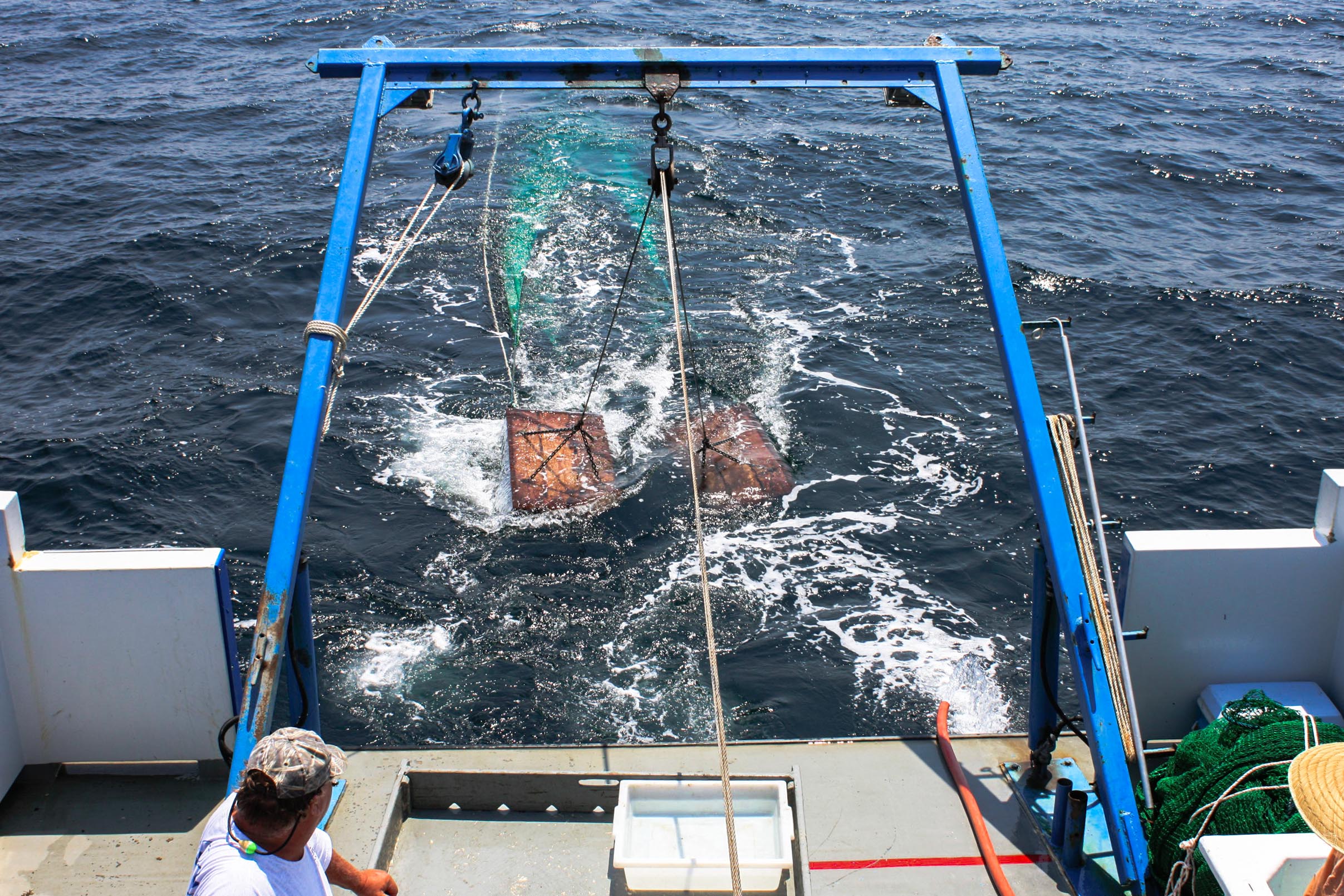

Ever wondered how scientists estimate the stock size of our fisheries? Obviously, there’s no way they can catch and count every fish in the ocean so they’ve had to come up with other ways of estimating the numbers of individuals in the ocean. This process is called surveying.
In fisheries independent surveying, scientists collect data on the abundance and size of fishes themselves through standardized sampling methods. In fisheries dependent surveys, the same types of data are collected from fisherman based on what they caught. Both types of surveying are used together to get accurate estimates of things like fisheries stock size, which refers to the number of individuals of a commercially (or recreationally) important fish or shellfish species. Whether it’s a scientist or a fisherman, there are quite a few methods of fishing – longline, gillnet, rod and reel, trap, and trawl – just to name a few. Each method does not collect all types of fish or shellfish equally well, so sampling methods are an important aspect of ensuring an accurate estimate of the fishery. For our Tool Talk today, we are going to focus on two of the methods scientists use: the bottom longline and otter trawl.
The otter trawl, sometimes called a bottom trawl, is a large net that is dragged across the ocean bottom behind a boat.

The net itself has several distinctive features: a pair of heavy doors (otter boards) at the opening, a tickler chain, and the collecting part known as the cod end. The net is concave shaped and has two extensions at the mouth that are held open by the otter boards. The net is also weighted across the bottom of the mouth with a chain, commonly referred to as the tickler chain, which disturbs the bottom as it’s pulled and “tickles” up any bottom dwelling species. When the boat is in motion, the otter boards are forced apart (force of water and boards act in opposition) and hold the mouth open horizontally while the floats across the top and the chain across the bottom hold it open vertically. Opposite the mouth, the net funnels into a cod end, which is made of a finer mesh size and where all of the organisms are collected.

Bottom trawling selects for species that live on, in, or near the bottom and includes many groundfish species (like flatfish or ground mullet) as well as invertebrates such as shrimp and crabs. Since trawls do not catch only a specific species of fish or shellfish, many species that are not the targeted species are unintentionally caught: these are referred to as bycatch. Trawling also disturbs the sea floor as it is pulled across the bottom and can unintentionally cause damage to fragile soft corals, sponges and other marine life.
Longlining is a commercial fishing method that gets its name from the long horizontal fishing line, up to a mile in length, from which hang leader lines. These leader lines, called gangions, are attached to the main line at set intervals, hang vertically in the water and hold baited hooks.

Some longlines have as many as 1000 baited hooks. Longlines are set out (deployed) from the boat with floats along the way and can stay or ‘soak’ in the water anywhere from a few hours to a couple of days. A longline’s leader line can be set to target fish occurring at different depths in the water column like snapper and grouper or to target demersal species including flounder and many sharks. This latter method is referred to as bottom longlining.

ACER’s Consumer group is studying the effects of the oil spill on mid-level (i.e. secondary consumers) to higher-order (tertiary) consumers, which are levels within the consumer part of a trophic chain or web. The Consumer research group is using multiple sampling methods including bottom trawling and bottom longlining to collect post-oil spill fisheries data that can then be compared to long-term pre-oil spill data. Any differences measured will help to determine impacts on fisheries populations or fish stocks during that time. To learn more about the research being done by ACER’s Consumer group, please visit their research page or check out this Fact Sheet.